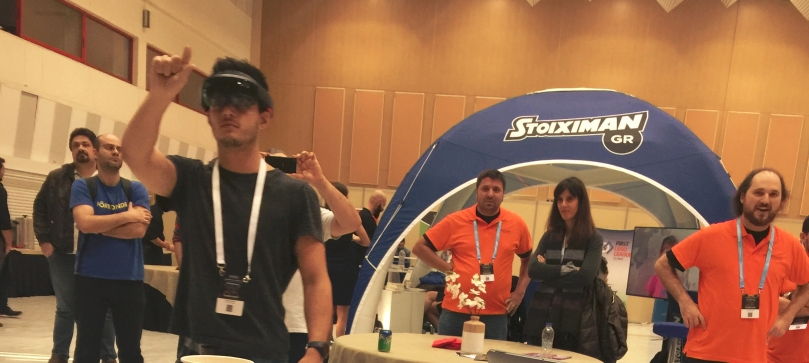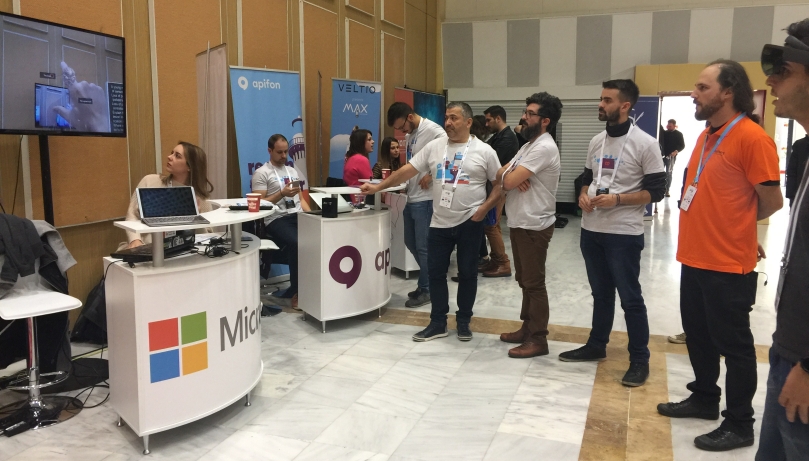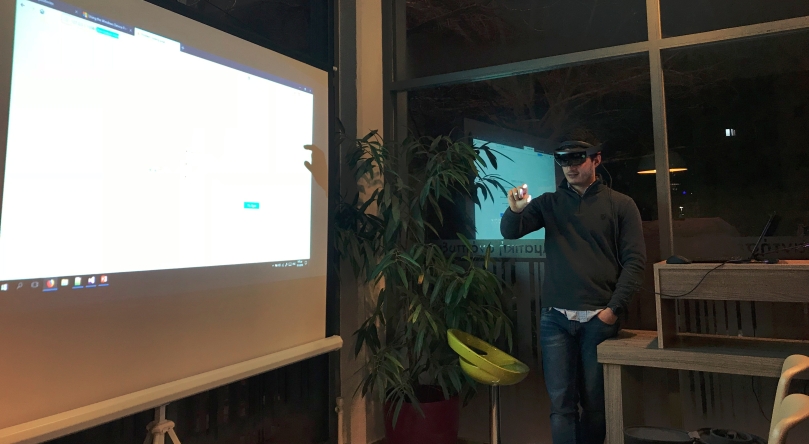HoloLens a new approach
In the past few years, Microsoft has undergone significant transformations. One of their noteworthy investments has been in the development of HoloLens, formerly known as Project Baraboo, ushering in a new era of technology. HoloLens is a pair of smart glasses meticulously designed and crafted by Microsoft, operating on the Windows 10 operating system. Equipped with a cutting-edge array of sensors, this device seamlessly integrates advanced technology into your surroundings.
However, it’s worth noting that HoloLens comes with a relatively high price tag. The development edition is priced at $3,000, while the commercial suite tailored for business applications costs $5,000. Microsoft has announced its plans to launch a new iteration of HoloLens in the first quarter of 2019. This next-generation device is expected to feature a significant reduction in price and an expanded field of view, making it even more accessible and versatile for users.
Here are some indicative features of HoloLens:
CPU – Intel 32-bit (1GHz)
Memory – 2 GB RAM, 1 GB HPU RAM
Storage – 64 GB (flash memory)
Display – 2.3 megapixel widescreen stereoscopic head-mounted display
Sound – Spatial sound technology
Input – Inertial measurement unit (Accelerometer, gyroscope, and magnetometer)
Camera – 2.4 MP
Weight – 579 g (1.28 lb)
My Holographic experience
 Working with the HoloLens device over the past year was an immensely rewarding experience. It’s built upon the foundation of two cutting-edge technologies: spatial mapping and spatial sound. These technologies combine to create a truly immersive and lifelike augmented reality environment.
Working with the HoloLens device over the past year was an immensely rewarding experience. It’s built upon the foundation of two cutting-edge technologies: spatial mapping and spatial sound. These technologies combine to create a truly immersive and lifelike augmented reality environment.
Spatial mapping is a game-changer as it seamlessly blends the real world with the virtual, resulting in holograms that appear strikingly realistic. This merging of physical and digital spaces opens up a world of possibilities for various applications and industries.
Spatial sound, on the other hand, takes audio to the next level by offering a 3D sound simulation experience. This means that sounds are not only heard but also perceived in terms of direction, distance, and the environment. It adds another layer of immersion and interaction to the HoloLens experience.
Certainly, working with HoloLens presented its fair share of challenges, mainly because it’s a relatively new tool, and much of the development had to be done from the ground up. However, the Microsoft libraries provided by the Mixed Reality Toolkit (commonly known as HoloToolkit) were invaluable in overcoming these hurdles. They served as a robust resource, streamlining the development process and making it easier to harness the full potential of the HoloLens technology.
Despite the challenges, the opportunities and innovations that HoloLens brings to the table make it an exciting platform for developers like myself. It opens doors to new possibilities and applications that can revolutionize industries and enhance user experiences in remarkable ways.
Five years ago, I embarked on a journey that was fraught with challenges from the very start. It soon became evident to me that many fellow developers would encounter these same obstacles. As a result, I decided to develop tutorials to assist others in navigating the complexities I had faced. Additionally, I collaborated with my team in the Medical Physics Laboratory, under the guidance of Professor Dr. Bamidis, to create two educational applications in the field of medical education.
The “AsclepiOS” application represented a groundbreaking innovation, seamlessly merging scenario-based learning techniques with Microsoft’s HoloLens technology. This unique fusion not only enhanced medical students’ comprehension but also enabled them to actively engage in the diagnostic process from the early stages of their education. As a testament to its significance, the AsclepiOS application earned recognition at the Excellence Awards during the ECEL 2017 event in Porto, earning a place among the top ten finalists.
The “Ascending and Descending Pathways of the Central Nervous System” application was a collaborative effort with the University of Leeds, in particular, Professor Dr. James Pickering and his dedicated team. Under their expert guidance, we developed this application as an invaluable resource for teaching neural anatomy. This application underwent rigorous testing and was introduced into Professor Dr. James Pickering’s neuroanatomy courses at the University of Leeds, receiving highly positive feedback from both students and educators alike. A glimpse of the project’s capabilities is showcased in the video below.
Additionally, I have had the privilege of developing an application tailored to the needs of visually impaired individuals. This application serves as a comprehensive indoor and outdoor navigation tool, offering both guided and non-guided modes to assist visually impaired individuals in navigating their surroundings. Beyond navigation, it provides a range of essential services designed to enhance everyday life for its users. These services encompass features such as face detection and verification, facial expression detection, environment recognition, optical character recognition, and more, contributing to a more inclusive and accessible world for the visually impaired community.


Within the framework of this successful collaboration between Microsoft Hellas and the Department of Medical Physics, I had the honor of showcasing the applications developed at the Laboratory of Medical Physics. These presentations took place at two significant events held in Thessaloniki, namely VOXXED Thessaloniki 2017 and DEVit 2018. These platforms provided an excellent opportunity to highlight the innovative work and impactful contributions arising from our partnership.

In January 2018, I had the privilege of participating in a workshop titled “Introduction to Augmented and Mixed Reality” organized by the dedicated team at “Thessaloniki .NET Meetup.” This event was hosted at the Coho workspace, where I had the opportunity to present the chapter titled “3D Visualization from the HoloLens World.” During my presentation, I delved into the exciting realm of mixed reality, shedding light on the transformative potential it holds.
During the workshop, we thoroughly explored the fundamental building blocks crucial for HoloLens technology. This comprehensive coverage included key topics like hand gestures, eye gaze tracking, voice commands, spatial audio, holographic displays, and spatial mapping. The workshop provided attendees with an immersive and enriching experience, enabling them to gain a deep understanding of these foundational elements. Importantly, it allowed participants to appreciate the practical applications of this emerging technology in the real world, highlighting its potential to transform various industries and fields.

The technical information for HoloLens was collected by the sources: Microsoft Mixed Reality Docs, theverge.com.
Not a HoloLens / WMR team member